-
 Bitcoin
Bitcoin $105,494.8913
-0.47% -
 Ethereum
Ethereum $2,536.4217
-1.40% -
 Tether USDt
Tether USDt $1.0004
-0.01% -
 XRP
XRP $2.1454
-0.01% -
 BNB
BNB $646.4114
-1.24% -
 Solana
Solana $145.3845
-2.17% -
 USDC
USDC $0.9999
0.00% -
 Dogecoin
Dogecoin $0.1784
-0.97% -
 TRON
TRON $0.2706
0.26% -
 Cardano
Cardano $0.6262
-2.37% -
 Hyperliquid
Hyperliquid $40.2782
-4.49% -
 Sui
Sui $2.9638
-3.24% -
 Chainlink
Chainlink $13.2126
-1.58% -
 Bitcoin Cash
Bitcoin Cash $433.3696
-3.44% -
 UNUS SED LEO
UNUS SED LEO $9.1040
1.08% -
 Stellar
Stellar $0.2567
-1.45% -
 Avalanche
Avalanche $18.9764
-2.05% -
 Toncoin
Toncoin $2.9578
-2.28% -
 Shiba Inu
Shiba Inu $0.0...01205
-0.42% -
 Hedera
Hedera $0.1547
-2.62% -
 Litecoin
Litecoin $85.3396
-0.96% -
 Polkadot
Polkadot $3.7914
-1.26% -
 Ethena USDe
Ethena USDe $1.0003
-0.01% -
 Monero
Monero $312.3308
1.34% -
 Dai
Dai $0.9999
-0.01% -
 Bitget Token
Bitget Token $4.5283
-0.35% -
 Uniswap
Uniswap $7.4176
-2.51% -
 Pepe
Pepe $0.0...01099
-2.59% -
 Pi
Pi $0.6177
6.25% -
 Aave
Aave $276.0751
-3.58%
How to interpret the surge in the ROC rate of change indicator? Is a rapid decline after overbought a risk?
A surge in the ROC indicator signals strong bullish momentum, but traders must consider volume and other indicators to manage the risk of a rapid decline.
Jun 13, 2025 at 02:57 am
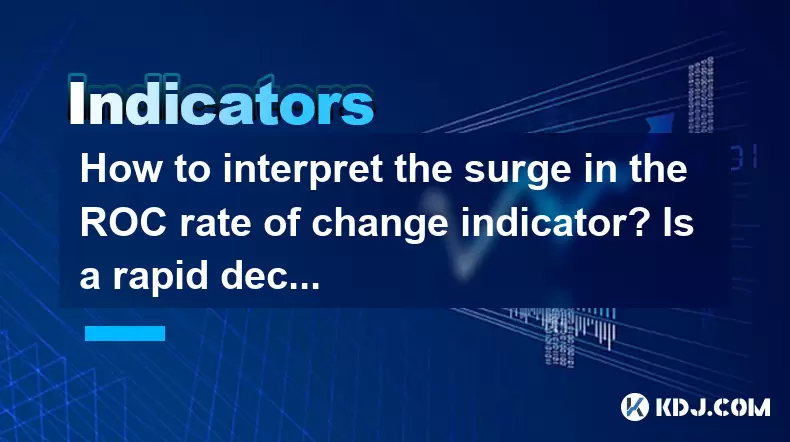
The Rate of Change (ROC) indicator is a momentum oscillator that measures the percentage change in price over a specified period. It's a versatile tool used by traders to gauge the momentum of a cryptocurrency's price movement. When the ROC surges, it often signals a strong bullish trend, but interpreting this surge requires a nuanced understanding of market dynamics and the indicator's behavior.
Understanding the ROC Indicator
The ROC indicator calculates the percentage change in price from one period to the next. A positive ROC value indicates an increase in price, while a negative value shows a decrease. The formula for ROC is:
[ \text{ROC} = \left( \frac{\text{Current Price} - \text{Price n periods ago}}{\text{Price n periods ago}} \right) \times 100 ]
The ROC can be set to different periods, typically ranging from 9 to 14 days, depending on the trader's preference and the timeframe they are analyzing. A higher ROC value suggests stronger momentum, and a surge in the ROC can be interpreted as a sign of increasing bullish sentiment.
Interpreting a Surge in the ROC
A surge in the ROC indicates that the price of a cryptocurrency is accelerating. This can be a signal for traders to consider entering a long position, as it suggests that the momentum is strong and the price may continue to rise. However, it's crucial to consider other factors such as volume, market sentiment, and other technical indicators to confirm the trend.
For instance, if the surge in the ROC is accompanied by high trading volume, it lends more credibility to the bullish signal. Conversely, if the volume is low, the surge might be less reliable, as it could be driven by a small number of trades rather than widespread market interest.
Overbought Conditions and Rapid Decline
When the ROC reaches high levels, it can indicate that the cryptocurrency is in an overbought condition. An overbought condition suggests that the price may have risen too quickly and could be due for a correction. This is where the risk of a rapid decline comes into play.
A rapid decline after an overbought condition can indeed be a risk. If the ROC surges to extreme levels and then quickly drops, it may signal that the bullish momentum is waning and that a bearish reversal is imminent. Traders should be cautious and consider taking profits or setting stop-loss orders to protect their positions.
Using Other Indicators to Confirm Signals
To mitigate the risks associated with a rapid decline after an overbought condition, traders often use other technical indicators in conjunction with the ROC. The Relative Strength Index (RSI) and Moving Average Convergence Divergence (MACD) are popular choices.
- RSI: If the RSI also shows overbought conditions (typically above 70), it can confirm the signal from the ROC. A divergence between the RSI and price can also be a warning sign of a potential reversal.
- MACD: The MACD can help confirm the momentum indicated by the ROC. If the MACD line crosses below the signal line after a surge in the ROC, it could indicate that the bullish momentum is fading.
Practical Example of Using ROC
Let's consider a practical example to illustrate how to interpret a surge in the ROC and manage the risk of a rapid decline.
Scenario: You are tracking Bitcoin (BTC) and notice that the 14-day ROC has surged from 5% to 15% over the last few days. The price of BTC has been steadily increasing, and the trading volume has been high.
Interpretation: The surge in the ROC suggests strong bullish momentum. You decide to enter a long position, expecting the price to continue rising.
Risk Management: To manage the risk of a rapid decline, you set a stop-loss order at a level that would limit your potential loss. You also keep an eye on the RSI, which is currently at 75, indicating overbought conditions.
Monitoring: Over the next few days, the ROC begins to decline rapidly, dropping from 15% to 5%. The RSI also drops below 70, and the MACD line crosses below the signal line. These signals suggest that the bullish momentum is fading, and a price correction could be imminent.
Action: You decide to exit your long position to lock in profits and avoid potential losses from a rapid decline.
Combining ROC with Fundamental Analysis
While the ROC is a powerful technical indicator, it's essential to combine it with fundamental analysis to get a more comprehensive view of the market. Fundamental factors such as news events, regulatory changes, and macroeconomic trends can significantly impact cryptocurrency prices.
For instance, if a surge in the ROC coincides with positive news about a cryptocurrency, such as a major partnership or a regulatory approval, it can reinforce the bullish signal. Conversely, if the surge occurs amidst negative news, it might be a false signal, and traders should be more cautious.
Case Studies of ROC Surges and Declines
To further illustrate the concepts discussed, let's look at a couple of case studies involving well-known cryptocurrencies.
Case Study 1: Ethereum (ETH) Surge in 2021: In early 2021, Ethereum experienced a significant surge in its ROC, reaching levels above 20% on a 14-day basis. This surge was accompanied by high trading volume and positive news about Ethereum's upcoming upgrades. However, after reaching overbought levels, the ROC rapidly declined, and Ethereum's price corrected by about 20%. Traders who recognized the overbought condition and set stop-loss orders were able to mitigate their losses.
Case Study 2: Bitcoin (BTC) in 2017: During the 2017 bull run, Bitcoin's ROC surged to extreme levels, often exceeding 30% on a 14-day basis. The high ROC values were accompanied by massive trading volumes and widespread media coverage. However, after reaching peak levels, the ROC experienced a rapid decline, signaling the end of the bull run. The price of Bitcoin subsequently crashed, highlighting the risk of a rapid decline after an overbought condition.
FAQs
Q1: Can the ROC indicator be used for short-term trading?
- Yes, the ROC indicator can be used for short-term trading by adjusting the period to a shorter timeframe, such as 5 or 7 days. This can help traders identify quick changes in momentum and make timely decisions.
Q2: How does the ROC indicator perform in sideways markets?
- In sideways markets, the ROC tends to fluctuate around zero, indicating little to no momentum. Traders should be cautious in such conditions and consider using other indicators to confirm any potential signals.
Q3: Is it possible for the ROC to give false signals?
- Yes, like any technical indicator, the ROC can give false signals, especially in volatile markets. It's important to use it in conjunction with other indicators and fundamental analysis to increase the reliability of the signals.
Q4: How can traders adjust the ROC period for different trading strategies?
- Traders can adjust the ROC period based on their trading strategy. For long-term trends, a longer period like 21 or 28 days might be more suitable, while for short-term trading, a shorter period like 5 or 7 days could be more effective. Experimenting with different periods can help traders find the best fit for their strategy.
Disclaimer:info@kdj.com
The information provided is not trading advice. kdj.com does not assume any responsibility for any investments made based on the information provided in this article. Cryptocurrencies are highly volatile and it is highly recommended that you invest with caution after thorough research!
If you believe that the content used on this website infringes your copyright, please contact us immediately (info@kdj.com) and we will delete it promptly.
- As the Digital Asset Class Evolves, the Focus Shifts From Beta to Alpha
- 2025-06-15 08:25:12
- Introducing Bitcoin Solaris: Mobile Bitcoin (BTC-S) Mining for Everyday Users
- 2025-06-15 08:25:12
- Roswell Becomes the First U.S. City to Create a Bitcoin Reserve
- 2025-06-15 08:20:13
- Imagine your investments working around the clock, scanning global markets for the best opportunities
- 2025-06-15 08:20:12
- Bo Hines Outlines Trump Administration's Aggressive Push to Make the U.S. a Global Cryptocurrency Leader
- 2025-06-15 08:15:13
- BNB Chain Launches Gas-Free Carnival to Eliminate Transaction Fees for Stablecoin Transfers
- 2025-06-15 08:15:13
Related knowledge
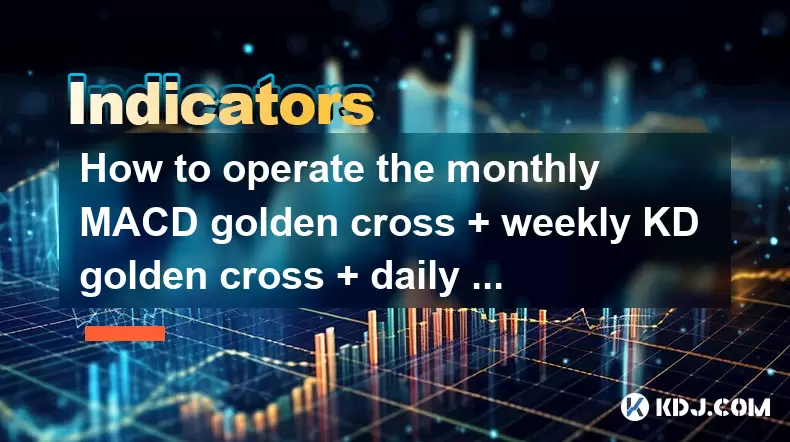
How to operate the monthly MACD golden cross + weekly KD golden cross + daily volume breakthrough?
Jun 15,2025 at 05:36am
Understanding the Strategy: Monthly MACD Golden CrossTo effectively operate the monthly MACD golden cross, traders must first understand what this signal entails. The MACD (Moving Average Convergence Divergence) golden cross occurs when the MACD line crosses above the signal line on a given chart timeframe. When this happens on the monthly chart, it sug...
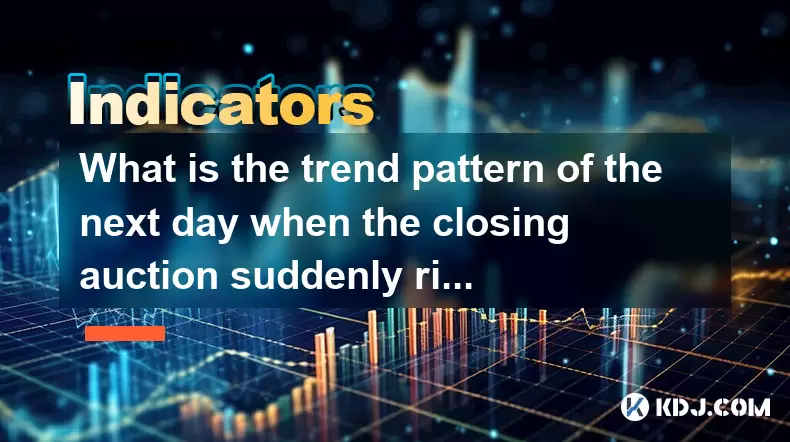
What is the trend pattern of the next day when the closing auction suddenly rises?
Jun 15,2025 at 08:15am
Understanding Closing Auctions in Cryptocurrency MarketsIn the context of cryptocurrency trading, a closing auction refers to a mechanism used by exchanges to determine the closing price of an asset at the end of a trading session. This process typically occurs within a short time window before the market closes for the day and aims to provide a fair an...
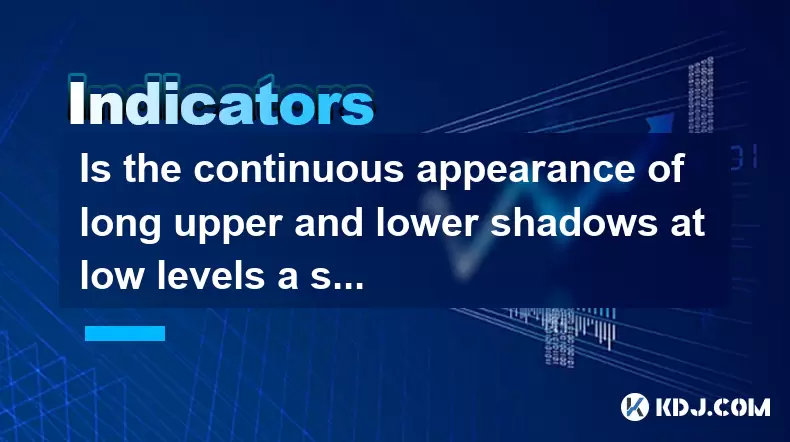
Is the continuous appearance of long upper and lower shadows at low levels a signal of accumulation?
Jun 15,2025 at 01:43am
Understanding Long Upper and Lower Shadows in Candlestick ChartsIn the world of cryptocurrency trading, candlestick patterns are widely used to analyze price movements. A long upper shadow, also known as a wick or tail, indicates that the price rose significantly during the period but was pushed back down by selling pressure. Conversely, a long lower sh...
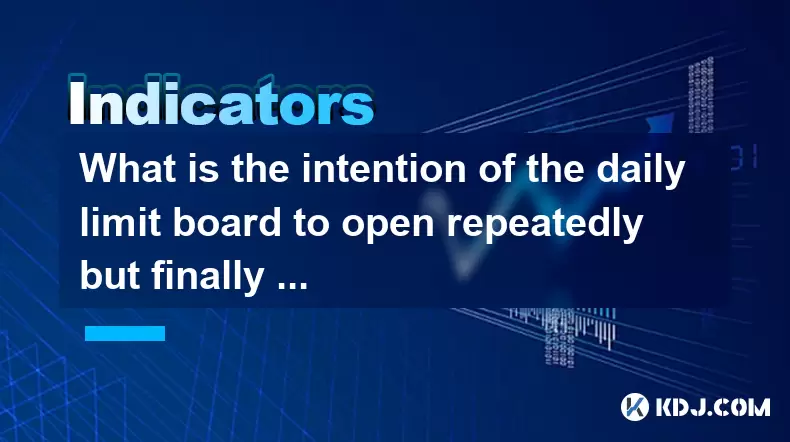
What is the intention of the daily limit board to open repeatedly but finally close?
Jun 15,2025 at 01:08am
Understanding the Daily Limit Board in Cryptocurrency TradingIn cryptocurrency trading, a daily limit board refers to a price movement restriction mechanism applied by certain exchanges or regulatory bodies. This mechanism is primarily used to prevent extreme volatility and panic selling or buying during periods of intense market fluctuation. When an as...

How to calculate the probability of trend continuation after the MACD column divergence?
Jun 14,2025 at 08:01am
Understanding MACD Column DivergenceThe Moving Average Convergence Divergence (MACD) is a widely used technical indicator in cryptocurrency trading. The MACD column, also known as the histogram, represents the difference between the MACD line and the signal line. When price makes a new high or low but the MACD histogram does not confirm this movement, a...
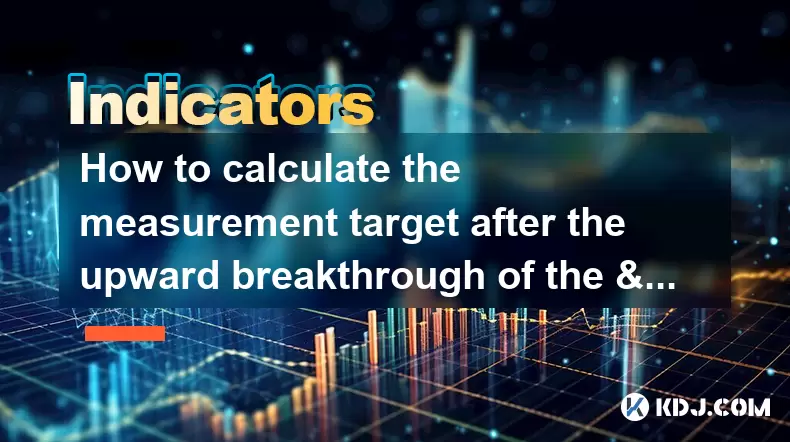
How to calculate the measurement target after the upward breakthrough of the "descending wedge"?
Jun 15,2025 at 05:00am
Understanding the Descending Wedge PatternA descending wedge is a technical analysis pattern typically found in price charts of cryptocurrencies. It is characterized by two converging trendlines: one drawn along a series of lower highs (resistance) and another connecting a series of higher lows (support). This pattern usually indicates a potential bulli...

How to operate the monthly MACD golden cross + weekly KD golden cross + daily volume breakthrough?
Jun 15,2025 at 05:36am
Understanding the Strategy: Monthly MACD Golden CrossTo effectively operate the monthly MACD golden cross, traders must first understand what this signal entails. The MACD (Moving Average Convergence Divergence) golden cross occurs when the MACD line crosses above the signal line on a given chart timeframe. When this happens on the monthly chart, it sug...

What is the trend pattern of the next day when the closing auction suddenly rises?
Jun 15,2025 at 08:15am
Understanding Closing Auctions in Cryptocurrency MarketsIn the context of cryptocurrency trading, a closing auction refers to a mechanism used by exchanges to determine the closing price of an asset at the end of a trading session. This process typically occurs within a short time window before the market closes for the day and aims to provide a fair an...

Is the continuous appearance of long upper and lower shadows at low levels a signal of accumulation?
Jun 15,2025 at 01:43am
Understanding Long Upper and Lower Shadows in Candlestick ChartsIn the world of cryptocurrency trading, candlestick patterns are widely used to analyze price movements. A long upper shadow, also known as a wick or tail, indicates that the price rose significantly during the period but was pushed back down by selling pressure. Conversely, a long lower sh...

What is the intention of the daily limit board to open repeatedly but finally close?
Jun 15,2025 at 01:08am
Understanding the Daily Limit Board in Cryptocurrency TradingIn cryptocurrency trading, a daily limit board refers to a price movement restriction mechanism applied by certain exchanges or regulatory bodies. This mechanism is primarily used to prevent extreme volatility and panic selling or buying during periods of intense market fluctuation. When an as...

How to calculate the probability of trend continuation after the MACD column divergence?
Jun 14,2025 at 08:01am
Understanding MACD Column DivergenceThe Moving Average Convergence Divergence (MACD) is a widely used technical indicator in cryptocurrency trading. The MACD column, also known as the histogram, represents the difference between the MACD line and the signal line. When price makes a new high or low but the MACD histogram does not confirm this movement, a...

How to calculate the measurement target after the upward breakthrough of the "descending wedge"?
Jun 15,2025 at 05:00am
Understanding the Descending Wedge PatternA descending wedge is a technical analysis pattern typically found in price charts of cryptocurrencies. It is characterized by two converging trendlines: one drawn along a series of lower highs (resistance) and another connecting a series of higher lows (support). This pattern usually indicates a potential bulli...
See all articles

























































































